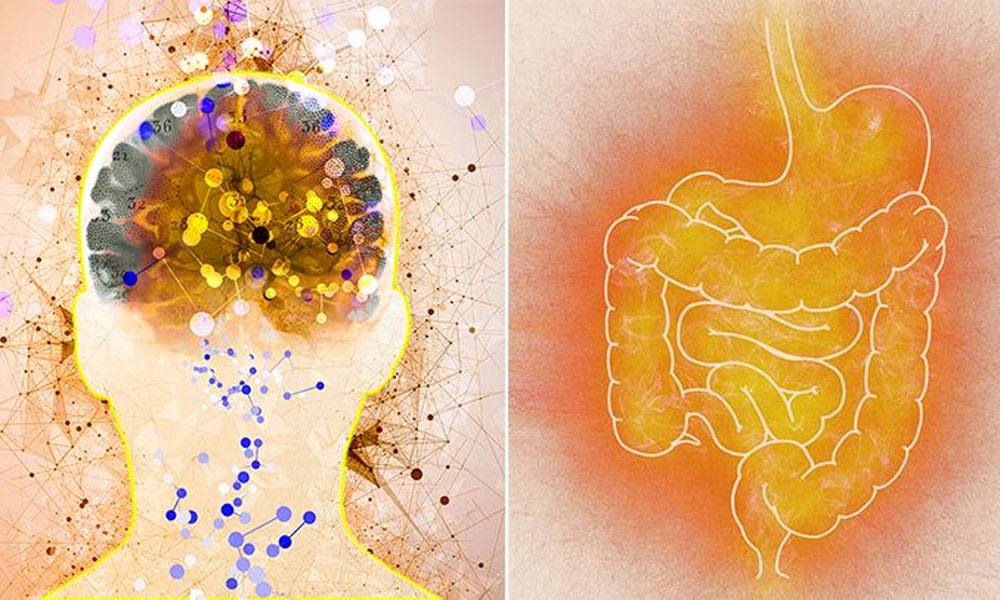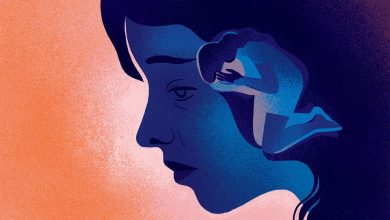Neurologists Link Motion Sickness to an Increased Risk for Migraines

A brand new research reveals that individuals who endure from migraines additionally report extra movement illness. During a digital rollercoaster experience, individuals who acquired migraine complications suffered from dizziness and movement illness greater than others.
During the digital rollercoaster experience, researchers additionally found that migraine victims had irregular nerve cell exercise in particular brain areas. Certain areas had elevated nerve cell exercise, whereas others had much less exercise. Researchers imagine this dysfunctional processing of visible movement stimuli contributes to migraines and susceptibility to movement illness. The new research was printed in Neurology, the medical journal of the American Academy of Neurology, on July 7, 2021.
“Millions of people regularly experience painful and debilitating migraine headaches that can reduce their quality of life,” stated research writer Arne May, MD, Ph.D., of the University of Hamburg in Germany.
“People with migraine often complain of dizziness, balance problems, and misperception of their body’s place in space during migraine. By simulating a virtual roller coaster ride, our study found that some of these problems are not only magnified in people who experience migraines but are also associated with changes in various areas of the brain. By identifying and pinpointing these changes, our research could lead to a better understanding of migraine, which could, in turn, lead to the development of better treatments.”
Neurologists hyperlink movement illness to elevated migraine threat
The research included twenty individuals who suffered from migraines and 20 who didn’t. The common age of contributors was thirty, and over 80% have been ladies. The folks with migraines had an common of 4 migraines per thirty days.
Using practical magnetic resonance imaging (fMRI), researchers took brain scans whereas watching movies to expertise a digital rollercoaster experience. No contributors reported having a migraine whereas watching the movies. After the digital expertise, researchers requested contributors about their ranges of dizziness, movement illness, or different signs.
They discovered that 65% of migraine victims skilled dizziness in contrast with 30% from the opposite group. Researchers additionally gave the research teams a questionnaire on movement illness, scoring symptom depth from 1-180.
Those with migraines had an common rating of 47 in contrast to 24 in folks with no migraines. Migraine victims additionally skilled disagreeable signs longer, with an common of 1 minute and 19 seconds. The different group’s signs lasted an common of 27 seconds. Not surprisingly, the migraine group reported extra intense signs than the second group.
Abnormal processing of visible movement stimuli within the brain is to blame
After analyzing the brain scans, researchers pinpointed modifications in nerve cell exercise by observing blood movement within the brain. Those with migraines had extra exercise in 5 areas of the brain:
- two areas within the occipital gyrus (superior and inferior)
- pontine nuclei
- cerebellar lobules V/VI
They noticed decreased brain exercise within the cerebellar lobule VIIb and center frontal gyrus. Researchers discovered that these modifications in visible processing areas of the brain correlated with migraine and movement illness symptom scores.
“One other area of the brain where we found pronounced nerve cell activity in people with migraine was within the pontine nuclei, which helps regulate movement and other motor activity,” stated May. “This increased activity could relate to abnormal transmission of visual, auditory, and sensory information within the brain. Future research should now look at larger groups of people with migraine to see if our findings can be confirmed.”
The German Research Foundation funded this research.
It’s clear that extra analysis is required to perceive the hyperlinks between movement illness and migraines higher. However, scientists believed they discovered the wrongdoer behind each of those situations.
The Serotonin Factor
Another research printed in Neurology in 2005 found that low serotonin ranges would possibly contribute to migraines and movement illness. Many medicine that deal with migraines lead to elevated serotonin ranges. We know that individuals with migraines report extra movement illness episodes, suggesting that low serotonin is the frequent denominator.
For the research, investigators recruited 39 folks with migraine complications and 37 folks with out the situation. They gave each teams tryptophan, a key ingredient concerned in making serotonin. The researchers gave half of every group capsules and a protein drink with out tryptophan. The different half obtained capsules and a balanced protein drink containing tryptophan.
Next, the researchers tried to induce movement illness within the contributors. They had them sit in a chair with their head inside a rotating drum painted with vertical black and white stripes. When the drum rotated, it created the phantasm of spinning. Researchers rotated the drum 10 occasions per minute for quarter-hour or till the topic felt nauseous. Participants rated their nausea, dizziness, and headache on a scale of 1 to 10 earlier than the experiment and each 3 minutes whereas the drum rotated.
Study outcomes
Migraine victims who obtained a protein drink with tryptophan requested to cease the experiment three minutes sooner than folks with out migraines who acquired this drink. They additionally had greater nausea, movement illness, and headache charges than non-migraine victims each earlier than and throughout the experiment. This held no matter which drink they acquired.
However, the tryptophan-free drink brought on comparable movement illness depth in each teams. This suggests {that a} lack of serotonin will increase movement illness signs. Because folks with migraines have already got decrease serotonin, this means that decreasing them additional with the tryptophan-free drink had no impact. So, the suppressed serotonin ranges could contribute to each movement illness and complications in migraine victims.
Final ideas on a research linking movement illness to elevated threat for migraines
A brand new research by the American Academy of Neurology discovered that individuals who endure from migraines report extra movement illness. Abnormal exercise in nerve cells inside the brain could clarify this phenomenon. During a digital rollercoaster experience, contributors had elevated or decreased exercise in 5 areas of the brain. These areas are accountable for processing visible movement stimuli.
Researchers hope that by pinpointing these modifications within the brain, higher therapies will emerge for migraine victims sooner or later. A associated research additionally means that low serotonin ranges might exacerbate movement illness in folks with migraines.












